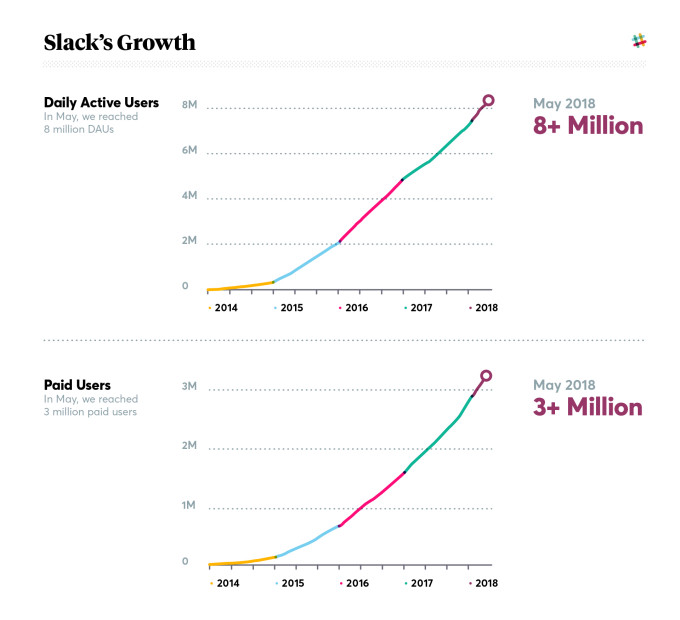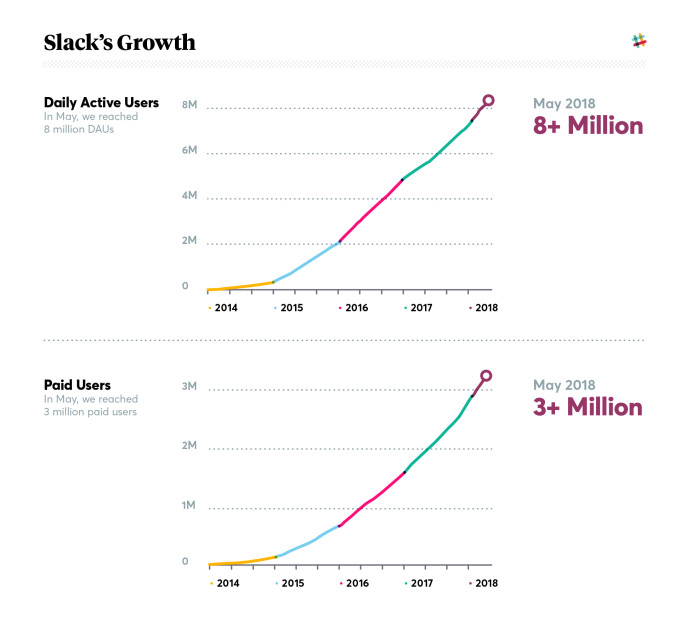As Slack looks to woo larger and larger companies with the prospect of a simpler workplace collaboration tool, the company said it has now hit 8 million daily active users.
The company said it also has 3 million paid users. A darling in Silicon Valley, Slack was initially able to capitalize on pent-up demand for workplace communications tools that were much simpler and easy to use. Companies like Yammer, Microsoft, and others looked to remake internal communications in ways that looked more like consumer tools in the Web 2.0 era, but Slack came out with an approach that was initially just a slick chat and team communications tool. That helped it rocket to a $5.1 billion valuation and drive its initial adoption among smaller companies and startups.
Slack in September said it had around 6 million daily active users, 50,000 teams and 2 million paid users, and around $200 million in annual recurring revenue. So it’s a pretty significant jump over the past nine months or so, though the company still has to break from the perception that it’s a tool that’s just good for startups and smaller companies. The larger enterprise deals are the ones that tend to drive larger contracts — and additional revenue — as it looks to build a robust business. More than half of Slack’s users are outside the U.S., a signal that it looks to continue to expand into new regions that may demand tools like Slack beyond just domestic markets.

Slack has been trying to roll out additional tools to support those larger companies, rather than just operate as a chat tool that can get out of control when companies have thousands of employees. The company has invested heavily in machine learning tools to make it easier to search for answers that may already exist in some Slack channel or direct message. Slack also rolled out threads, a long-awaited feature that users often demanded though it wasn’t clear how that would exist in Slack’s simpler interface.
There are already startups looking to pick away at niches that the company might not necessarily fill, too. Slite, a startup looking to build a simpler notes tool that would create a smarter internal wiki of sorts, raised $4.4 million last month. There’s also Atlassian’s Stride, which opened up to developers in February this year. And Microsoft has its own Slack competitor, Teams, that continues to get pretty big updates. Slack clearly exposed a lot of pent-up demand for similar tools, and now faces a lot of competition going forward.
Slack started the Slack Fund as a way to woo developers to build tools for Slack, and early last year invested in 11 new companies. The company has been trying to create a robust ecosystem where developers can fill the niches that the company might be missing, but has looks to focus on its core products. The company says there are now more than 1,500 apps in the Slack directory.


